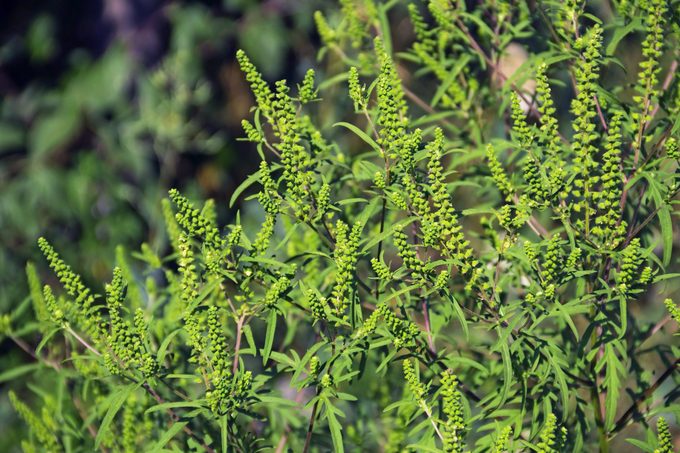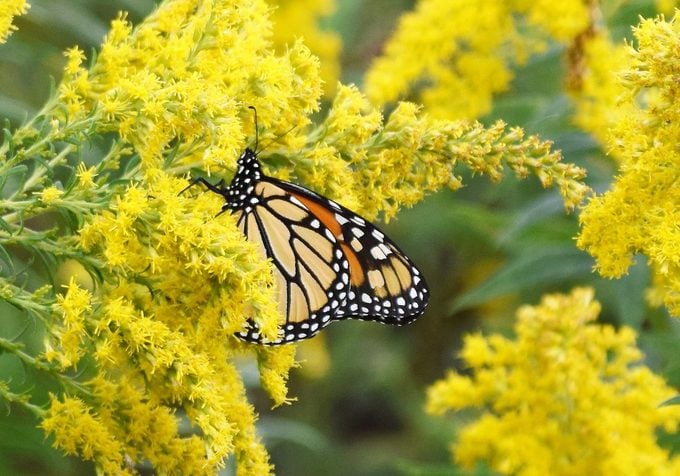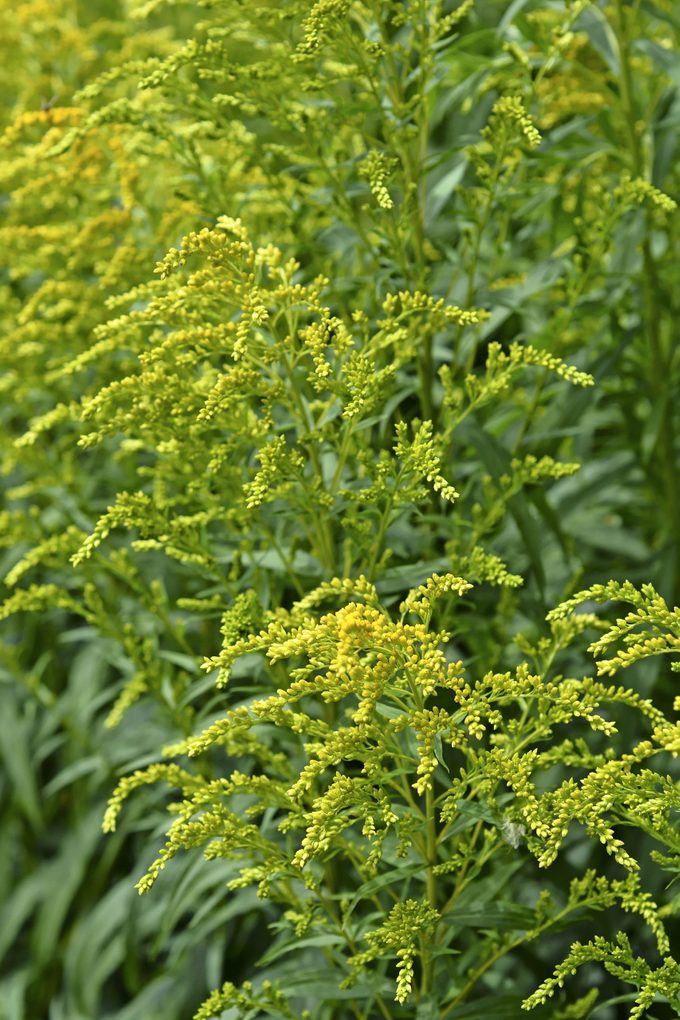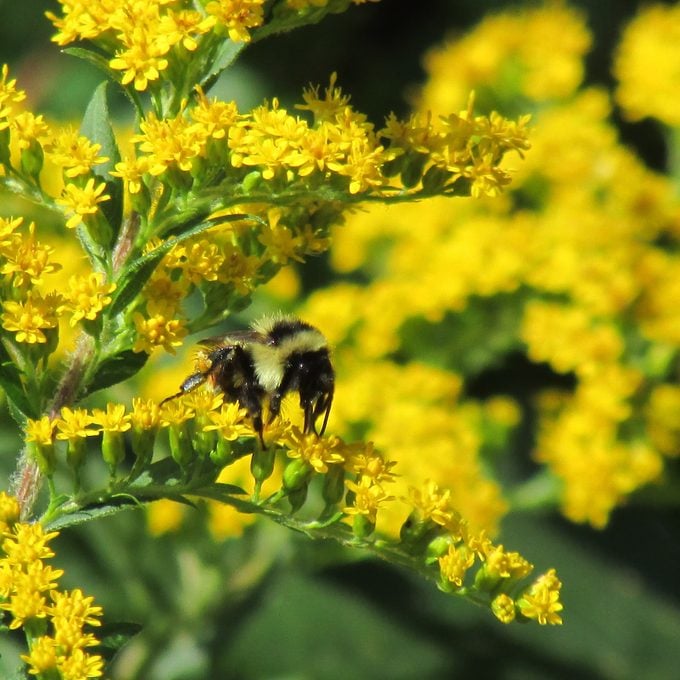Ragweed vs Goldenrod: What’s Growing in Your Yard?
Updated: Jul. 25, 2022
Learn how to tell if the weedy plant with yellowish flowers in your backyard is allergy-inducing ragweed or pollinator-friendly goldenrod.
Ragweed vs Goldenrod: What’s the Difference?

Ragweed and goldenrod look incredibly similar—but with an important difference. Ragweed is one of the most common causes of fall allergies. Goldenrod (which doesn’t cause sniffles) is an important source of pollen for helpful backyard pollinators, like moths and butterflies. If you spot a leggy plant with yellow or green flowers in your backyard or on a hike, don’t panic. Use these clues to figure out the difference between ragweed vs goldenrod.
Is Ragweed Related to Goldenrod?

Despite the plants’ similar appearances, goldenrod and ragweed are not closely related. They’re both from the Asteraceae family which is made up of over 30,000 recognized plant species and the plants bloom in late-summer or fall.
Ragweeds are common lawn weeds, annuals and part of a group called Ambrosia. About 50 species make up the Ambrosia genus, but the most prevalent type is common ragweed.
Goldenrods are from the genus Solidago. It’s a larger group of flowering perennial plants that includes about 100 species.
Most ragweed and goldenrod plants are native and found all over North America, including wildflower meadows.
Leaves and Stems
Ragweed and goldenrod plants vary in size, so it’s impossible to identify a mystery plant by only height. Common ragweed tops out at only 2 to 3 feet, and goldenrod may be as short as 1 foot tall. At their largest, ragweed reaches 6 to 8 feet while goldenrod grows up to 6 feet tall.
Take a closer look at the foliage for more clues. Most ragweed plants have purple-tinted stems with lobed, fernlike green leaves. Goldenrods usually have green stems—although several types have hints of purple—and smooth, undivided green leaves.
Follow these tips and tricks for a weed-free backyard.
Ragweed vs Goldenrod Flowers

The potentially sneeze-inducing flowers are the easiest way to tell apart ragweed and goldenrod. Inspect the blooms for two traits: color and abundance.
Ragweed has small green-yellow flowers that blend in with the rest of the plant. Goldenrod plants feature many large clusters of bright yellow flowers and stand out among other green plants.
Discover the best natural way to kill weeds.
Will Pollinators Visit Ragweed and Goldenrod?

If your plant’s identity is still a mystery—sit back and watch for pollinators—and mourning doves. Goldenrod has the type of pollen that insects prefer, so gardeners are much more likely to see pollinators at goldenrod. It also produces nectar, so hummingbirds prefer these flowers.
Ragweed is generally visitor-free, because it doesn’t offer the right type of pollen. However, mourning doves happily eat seeds from ragweed plants.
Next, check out the best flowers that attract bees.




















